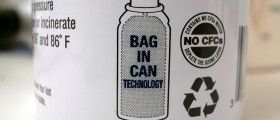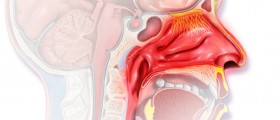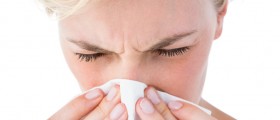
Postnasal drip, also called upper airway cough syndrome, occurs when the mucous membranes of the nose produce too much mucus. It collects in throat and behind the nose and causes symptoms like wheezing, runny nose, feeling of discomfort in the throat, coughing, scratchy throat and other symptoms.
What is postnasal drip?
Normally, mucous membranes produce certain amount of mucus which has its role in the human body, mainly to protect, lubricate and moisturize the airways and also to collect and expel dirt, dust and other unwanted particles.
Most of the mucus gently drips down the throat without any problems, but when it changes in viscosity the problems may occur. Increased production of mucus is a response to irritation, inflammation, infection and other factors that interfere with normal functioning of the airways. When this happens, it causes discomfort, tingling, scratching, urge to clear the throat and to cough, runny nose, hoarse voice and similar.
Postnasal drip is always associated with another health issue, usually an allergy, flu, common cold and other upper respiratory tract infections.
How to get rid of postnasal drip
Seasonal allergies often cause rhinitis or the inflammation and irritation of the nasal passages. Postnasal drip usually accompanies this condition. There is no cure for seasonal allergies but there are things that can be done to alleviate the symptoms, including the postnasal drip.
Antihistamines and decongestants are usually used and prescribed to treat the symptoms of allergies. Antihistamines reduce the inflammation and decongestants make the mucus thinner and easier to expel. In severe cases, nasal steroids may be prescribed.
If the postnasal drip is caused by flu or common cold, which are viral infections, there is not much to do except to try and alleviate the symptoms. When these infections are over, postnasal drip usually lingers for several days, sometimes even for weeks. It can help to use decongestants, nasal sprays and similar, to use saline solutions and to inhale vapors.
Bacterial infections may be less common than the viral ones, but their symptoms are similar and just as tiresome. However, unlike viral infections, bacterial ones must be treated with antibiotics.
Acid reflux is another health issue that can cause postnasal drip. If this is the case, it is important to reduce the acidity, to avoid foods that trigger acid reflux and to try some over-the-counter antacids, which are medications that reduce the reflux. However, if acid reflux indicates a more significant problem, like GERD, it requires medical evaluation.
Postnasal drip is often associated with pregnancy and even with the use of birth control pills. In this case the cause is hormonal and the best way to deal with it is to lead a healthy lifestyle and to be patient because it will go away after the baby is delivered.
It is clear that the treatment for postnasal drip depends on the underlying issue that is causing it. This problem can be managed with over-the-counter medications and even with home remedies, but it is always advised to find out the exact cause and to address it.

















Your thoughts on this
Loading...